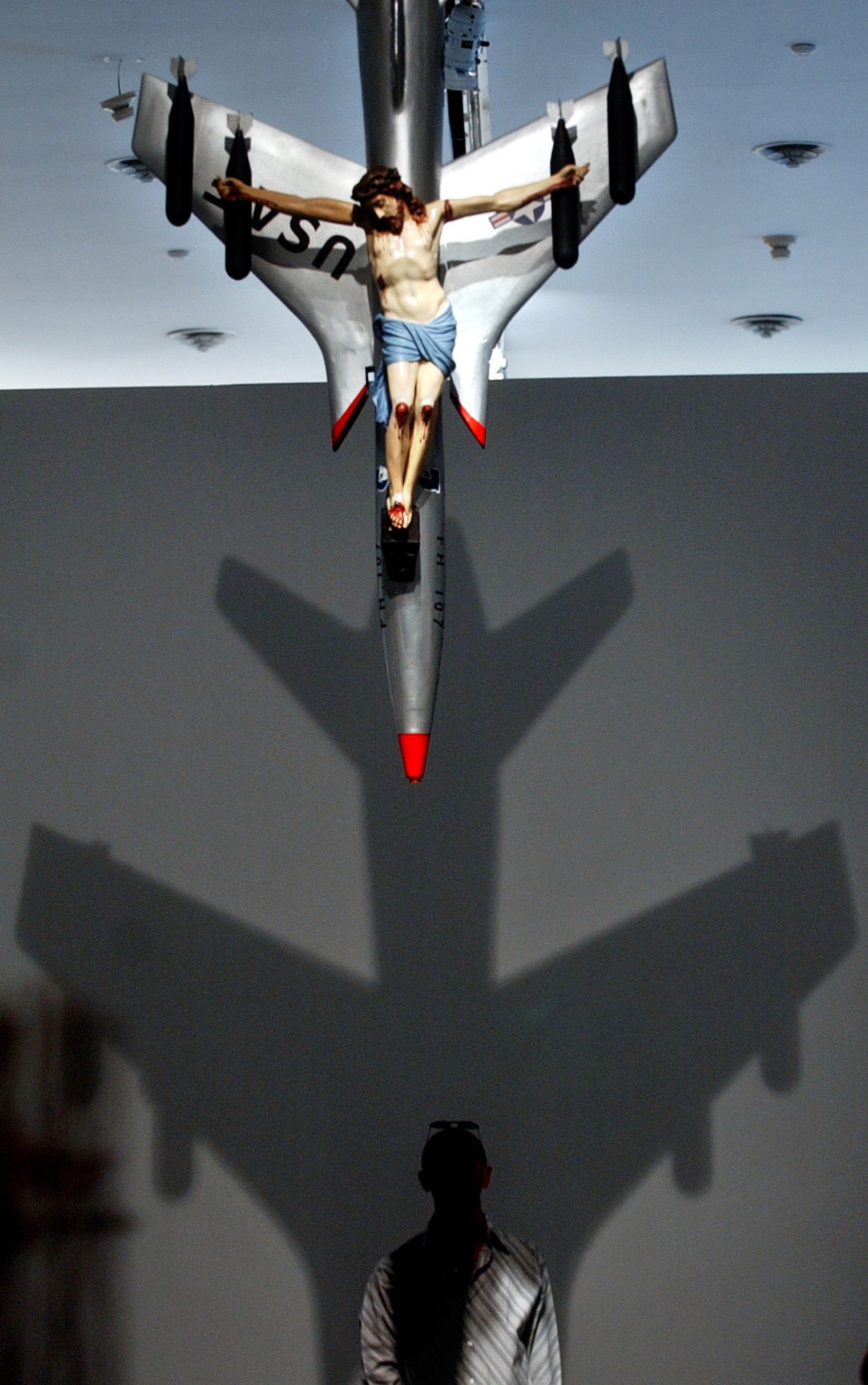In his artistic practice, Léon Ferrari makes use of different languages, such as sculpture, drawing, writing, collage, assemblage, installation, and video. This heterogeneous set of practices constitutes a quest for new aesthetic languages, but also a constant interrogation of power fluxes and normalizing devices that dictate the values of religion, art, the state, and justice itself. Ferrari’s artwork is, on the one hand, strongly permeated by a critique of violence. But on the other, it is also, quite often a tribute to women and eroticism. Repetition, irony, and literalness are, since his early career, the main resources of his aesthetics and poetics.
In the 1960s, the drawings and sculptures of Ferrari were mainly informed by the ethical questioning of religion and denounces of imperialism. In 1976, a new Argentinean military coup forced the artist and his family to flee from Buenos Aires to São Paulo, where he remained until the 1990s. During his stay in Brazil, Ferrari joined the local experimental art circuit, having, for example, worked extensively with the conceptual female artist Mira Schendel. Upon returning to Argentina, the artist continued to produce politically engaged artworks, focusing mainly on the disappearances and killings that occurred during the military dictatorship.
Though his production has been vast and very heterogeneous, his original 1960s criticism of state and church structures of power has persisted. For example, “Carta a un general” (Letter to a general) is a celebrated drawing that depicts a highly subjective text explaining the artist’s incapacity to write a logical letter to someone dressed in military uniform. These encrypted writing pieces led to the wire sculptures series named “Traps for generals.” From this same period, one of his most iconic works, “La civilización occidental y cristiana” (The Western Christian Civilization, 1965), expresses a Latin American perspective on the Vietnam War. It is a ready-made sculpture in which Christ on the cross is pegged to a US bomber.
Two decades later, the popular usage of the photocopier caught his imagination. The Paraheretics and Xerox Series, from 1986 (at MASP Collection) denounces the double standard of the Catholic Church concerning both war and sex. The series is composed of collages that superimposed the paintings of Renaissance great masters, such as Dürer, Perugino, and Michelangelo, to mass media iconography and images of the Kama Sutra. The series aroused sharp criticism and violent reactions on the part of conservative museum visitors.
In 2004, a retrospective of his works in Argentina outraged the then-Cardinal of Buenos Aires, archbishop Mario Bergoglio. The now Pope Francis I denounced as blasphemous the ready-made sculptures of the Virgin Mary in a blender and a group of saints in a frying pan. An ultra-Catholic broke into the exhibition hall and damaged several artworks leading to the temporary shutdown of the show. But the exhibition would be re-opened after Ferrari won a lawsuit claiming his right to freedom of expression, a claim that has been, in fact, the leitmotiv of his career and life.
Information from Nara Roesler; and New City Brazil.
Image 1: Credit…Natacha Pisarenko/Associated Press

